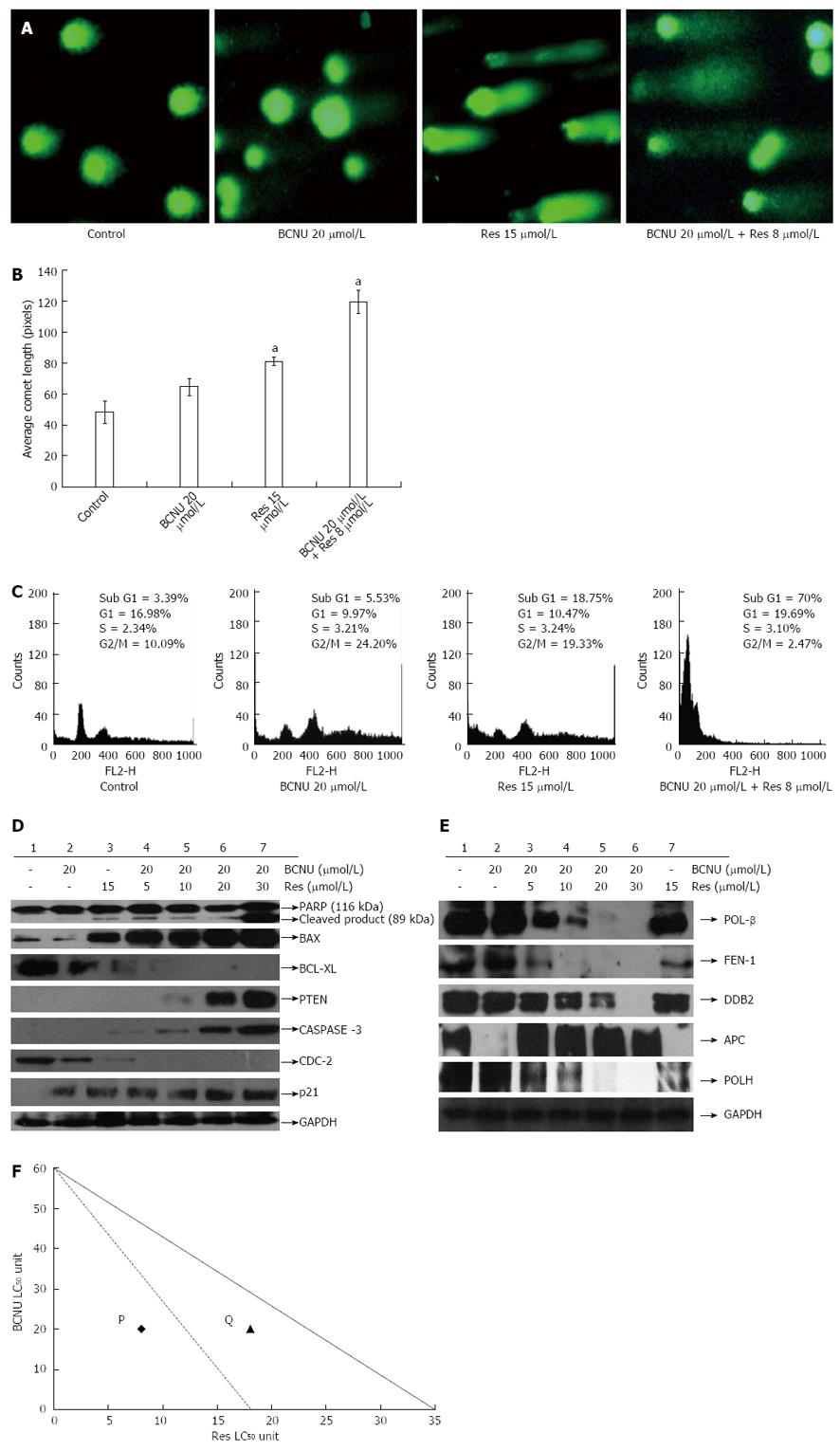Copyright
©2013 Baishideng Publishing Group Co.
World J Gastroenterol. Nov 14, 2013; 19(42): 7374-7388
Published online Nov 14, 2013. doi: 10.3748/wjg.v19.i42.7374
Published online Nov 14, 2013. doi: 10.3748/wjg.v19.i42.7374
Figure 6 1,3-Bis(2-chloroethyl)-1-nitrosourea and Res synergistically increased apoptosis in 5-fluorouracil-resistance cells.
A: Comet assay. Images were taken using a fluorescent microscope (Nikon-Eclipse, Japan) at × 20 magnification. Data are the representation of one of the replicates of three different experiments; B: Bar diagram representing the average comet score of the treated and untreated 5-FU-R cells in pixels, as obtained from TriTek CometScore™ software. Data are the mean ± SD of three different experiments, aP < 0.05 vs 20 μmol/L BCNU; C: Regulation of cell cycle and apoptosis by BCNU, Res and their combination in 5-FU-R cells. Fluorescence-activated cell sorting analysis was done after the desired treatment and then the DNA content was measured by Cell Quest Software. Data are the representation of one of the replicates of three different experiments; D, E: Western blotting of 5-FU-R cell lysate after treatment with BCNU and Res individually, as well as in combination. Glyceraldehyde-3-phosphate dehydrogenase was used as the loading control. Data are the representation of one of the replicates of three different experiments; F: Isobolograms for combinations of BCNU and Res in HCT-116 and 5-FU-R cells. The bold line represents the isobologram of BCNU and Res in HCT-116 and dotted lines represents the isobologram of BCNU and Res in 5-FU-R cells. The point P and Q represent the 50% cell death of the combined drug in case of 5-FU-R and HCT-116 cells, respectively. 5-FU: 5-fluorouracil; Res: Resveratrol; BCNU: 1,3-Bis(2-chloroethyl)-1-nitrosourea.
- Citation: Das D, Preet R, Mohapatra P, Satapathy SR, Kundu CN. 1,3-Bis(2-chloroethyl)-1-nitrosourea enhances the inhibitory effect of Resveratrol on 5-fluorouracil sensitive/resistant colon cancer cells. World J Gastroenterol 2013; 19(42): 7374-7388
- URL: https://www.wjgnet.com/1007-9327/full/v19/i42/7374.htm
- DOI: https://dx.doi.org/10.3748/wjg.v19.i42.7374









